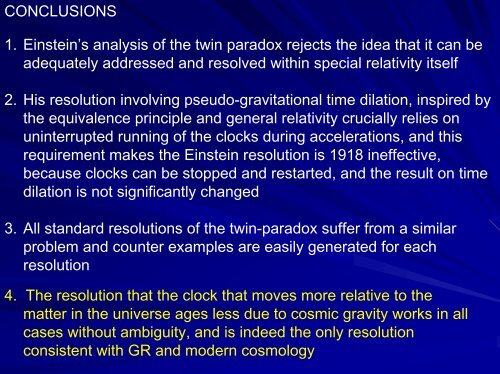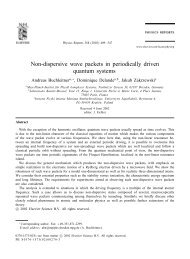EINSTEIN'S ANALYSIS OF THE TWIN PARADOX
EINSTEIN'S ANALYSIS OF THE TWIN PARADOX
EINSTEIN'S ANALYSIS OF THE TWIN PARADOX
You also want an ePaper? Increase the reach of your titles
YUMPU automatically turns print PDFs into web optimized ePapers that Google loves.
CONCLUSIONS<br />
1. Einstein’s analysis of the twin paradox rejects the idea that it can be<br />
adequately addressed and resolved within special relativity itself<br />
2. His resolution involving pseudo-gravitational time dilation, inspired by<br />
the equivalence principle and general relativity crucially relies on<br />
uninterrupted running of the clocks during accelerations, and this<br />
requirement makes the Einstein resolution is 1918 ineffective,<br />
because clocks can be stopped and restarted, and the result on time<br />
dilation is not significantly changed<br />
3. All standard resolutions of the twin-paradox suffer from a similar<br />
problem and counter examples are easily generated for each<br />
resolution<br />
4. The resolution that the clock that moves more relative to the<br />
matter in the universe ages less due to cosmic gravity works in all<br />
cases without ambiguity, and is indeed the only resolution<br />
consistent with GR and modern cosmology











